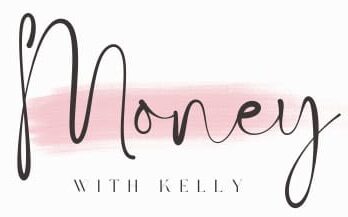.

What is a budget? A budget is a written, estimated spending plan. This plan should account for your income and expenses.
Are you living paycheck to paycheck? Do you have debt? Do you have goals for your future? Do you ever wonder how you will get ahead in life? Now is the time to learn how to create a budget.
A budget is the most basic way to learn how you spend your money. Without a budget, you will never get financial control of your life. Without a budget, you will always be overwhelmed.
What are your goals for the future? Without a budget, your goals are just a dream. A budget can make them a reality!

You need to learn how to create a budget today. It is one of the easiest things that you can do for yourself and your family. Creating a budget is the only way to figure out how much money you have.
You have worked so hard for your money. Don’t you want to know where it all goes.
Creating a budget is free…you just have to sit down and do it.
But let’s talk about your “why”

Why do I want to create a budget?
- Financial Control
- Saving for a home
- Paying off student loans
- Getting out of credit card debt
- Saving for college
- Retirement Investments
- Save for Christmas Gifts
- Saving for a dream wedding
- Buy a new car
Most people fail to reach their financial goals because they don’t think they can reach their goals. They think they will have to sacrifice to reach their goals. Creating a budget is not a sacrifice….it is a reality check.
Let’s get started…..
First, you need to write everything down. I like to work with a budget by the month. Some people are able to do a yearly budget, but most people should start by the month. You can write this by hand or start a spreadsheet on your computer.
Income:

Let’s get started. The main item to create a budget is your income. Write down how much you bring home each month. This includes your job and any side work that you do on a regular basis. If you get rental income, alimony, dividends, anything..write it down as income. This will represent your total incoming money. Be sure to check out this post about the 3 different types of income.
Expenses:
Expenses consist of all of your outgoing money. Let’s talk about the 3 different types of expenses.

Fixed Expenses:
Next step to create a budget are your fixed expenses. These expenses are the necessities. Things you must have every month to live. Look through your old bills to determine these numbers. These expenses may vary in cost, but try to come up with an average. These include:
- rent/mortgage
- Utilities: water, electricity, gas, phone, internet
- Food (only grocery store, not eating out)
- Car payments
- Insurance: car, home, etc
- Debt Service: student loans, credit cards
Obligated Expense:
Also need to create a budget are obligated expenses. These expense are not necessities. These are usually extras. These are the first type of expenses to look at cutting. These include:
- Cable
- Gym memberships
- Streaming services
- Wine Clubs
Variable Expenses:
Another expense to account for when creating a budge, is variable expenses. This is money that you spend, but don’t have to spend. These are the expenses that you can adjust to reach your financial goals. These include:
- Salon: nail, hair, wax
- Restaurant Dining
- Clothing
- Entertainment: movies, concerts, etc
- Kids sports, camps
Once you have compiled all the incomes and expenses, then we can start a plan.
Do you have leftover money…or are you living in debt?
First we need to determine your main goal.
If you are living in debt, then you need to adjust your expenses. What expenses could you drop? Do you use the gym membership? Do you need to eat out for lunch everyday? Start by making a few adjustments. This can make such a huge difference. I always recommend tackling debt first.
Some people have a hard time determining the difference between a NEED and a WANT. If your goal is to save for a great family vacation, then adjust your budget. If you want to save for college tuition, then adjust your budget.
Adjusting your budget can be easy. Look at the Obligated Expenses and Variable Expenses. These are the expenses that can be eliminated or cut. Start eating at home more often. Be sure to check out my blog post about the benefits of meal planning. This can save you tons of money and help improve your health. That’s a win win!
Do you really need all those streaming services. Assess which ones you use, and eliminate the ones you don’t. Believe me, you won’t miss it. Check out this video on how to save on streaming services.
One of the things to remember when creating a budget is that it is ever changing. You need to constantly adjust the budget. Make this a priority. Spend 15 minutes a month going over your budget. How did you do last month? Do you have leftover money? Did you use the gym membership? Make the adjustments.
They are many different ways to start tweaking your budget. One way is the 50/20/30 rule. I cover this budgeting rule in another blog post. But start with the basics above. Income, Fixed Expenses, Obligated Expenses, and Variable Expenses. And start adjusting monthly.
Hold yourself accountable. Write down your goals beside your budget. That way you can see why you want to make adjustments. You don’t have to sacrifice. Hopefully you will start working on this today!








Comments
Pingback: 50/30/20 Budget Rule | A Simple Guide to follo
Pingback: Benefits of Meal Planning | Top 5 Benefits of Meal Planning